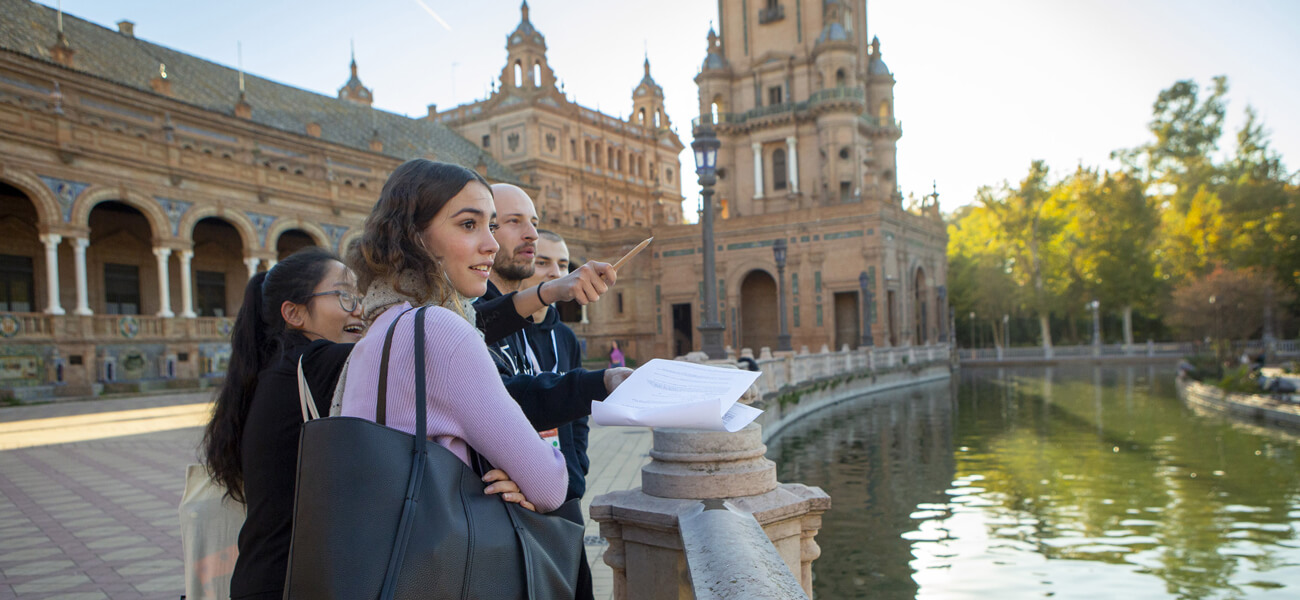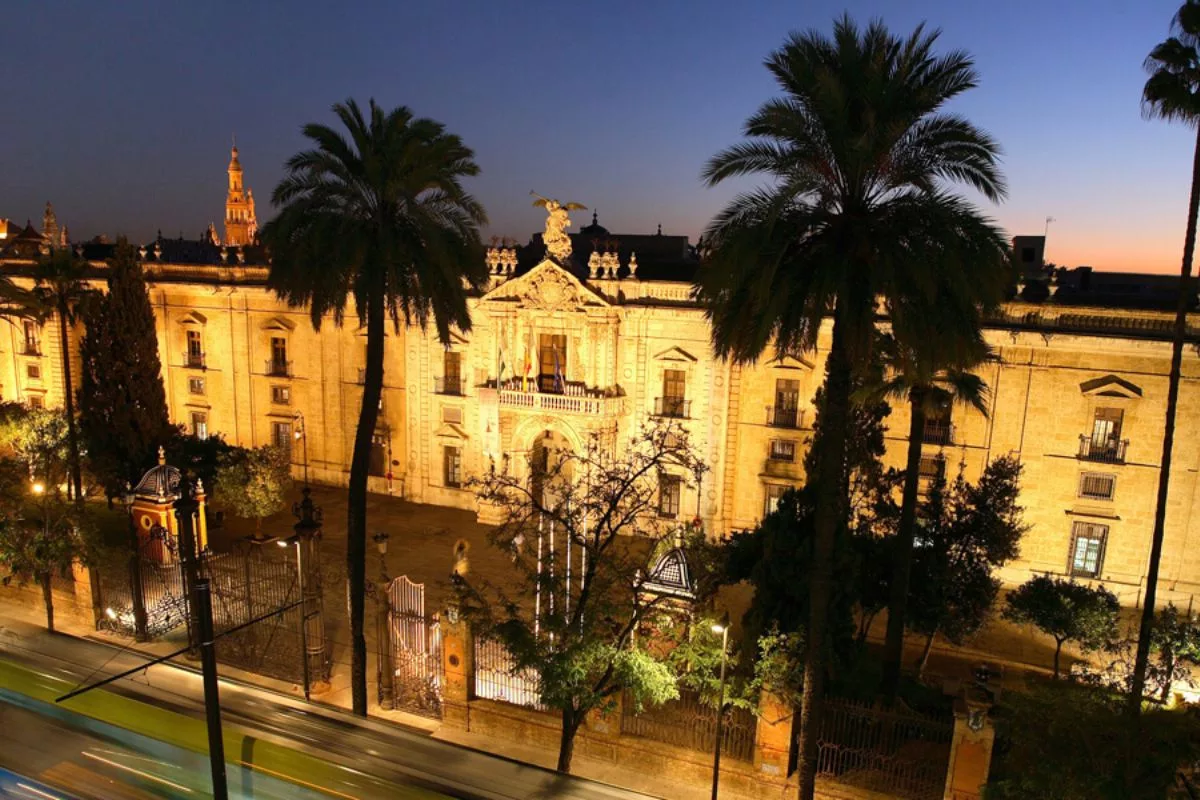Green Mobility Guide
Seville

Sevilla is a completely flat city. It is situated in one of the lowest areas of Spain, the lower valley of the river Guadalquivir. It is only 10 metres above sea level on average, which is 90 kilometres far by river navigation and 100 kms. by road.
With the largest old town in Spain, 4 square kilometres, a municipal area of about 140 square kilometres and many interesting neighbourhoods, it is an ideal city for walking and strolling. In a city that is flat, open and clear and has a very good climate most of the year, cycling is ideal.
The metro is very useful for connecting large urban areas, especially in the west-east direction, but the line north to south is still in progress. The tram is a very pleasant way move around the city so its route, which is now very short, is being extended to access key areas of the city.
Therefore, the bus is the most popular means of public transport, with its extensive network capable of reaching all parts of the city. Taxis are very useful, as they can be hailed not only at the taxi stations, but also at any point in the city, and their price is affordable.
Seville City Council is currently immersed in the Breathe Plan (Respira Seville) which is part of the Seville Strategic Plan for 2030: ‘Creating a sustainable city that mitigates and adapts to climate change’. This objective is specified in five strategies: Decarbonisation of the city, Seville as a territory of urban planning and bioclimatic architecture, New shared management of green spaces, Development of sustainable urban mobility and Sustainable management of resources and circular economy.
The improvement of pedestrian and cycle mobility and the promotion of public transport are two of the fundamental objectives of Seville’s Sustainable Urban Mobility Plan.
Tips & Recommendations
Underground / subway
Name of the company
Metro de Sevilla
Website
Ticket prices
Ticket prices dominated in Euro vary depending of the different 3 sections of the route. You can buy a single ticket at the station itself but if you buy a Consortium Pass or pay by bank card the prices are reduced. The reduced prices are the result of a series measures to mitigate the impact of the economic situation and inflation on Sevillian households, as well as to promote the use of public transport.
- Single ticket : €1.35 – €1.60 – €1.80
- Option Bono Metro : €0.33 – €0.47 – €0,55
- Option Bono Plus 45 : €0.26 – €0.37 – €0.44
Student prices and/or seasonal tickets
There is a project of the Andalusian Regional Government, to be implemented in 2022, in which only those under 30 years of age who can prove residence in Andalusia will pay 50%.
Map with stops
www.metro-sevilla.es/mapa-y-trayectos
The metro line runs 18 kilometres from west to east, with a total of 22 stops, in the municipality of Seville and 3 other municipalities in the metropolitan area (Sevilla, and San Juan de Aznalfarache, and Mairena del Aljarafe in the west, and Dos Hermanas in the southeast).
Urban rail (short distance train)
Name of the company
RENFE
Website
www.renfe.com/es/es/cercanias/cercanias-sevilla/horarios
Ticket prices
Ticket prices vary depend on the departure and arrival station. Two examples: Seville (San Bernado) – Dos Hermanas (second city in the metropolitan area of Seville). Distance 11 kilometres. Average price, 3,00 Euro Sevilla (Santa Justa) – Constantina (in the “Comarca de la Sierra Norte”). Distance: 63 kilometres, and Average price 11,00 Euros.
Student prices and/or seasonal tickets
Student prices and/or seasonal tickets:
A Youth Card issued by your Autonomous Community
– 20% discount for travel on Avant (mid-distance high-speed), Media Distancia (Mid-distance) and Regional trains on the Feve network.
– 5% discount On AVE and Larga Distancia (long distance high-speed) trains.
– Other international cards (European Youth Card issued in countries associated with International Student Identity Card, IYTC International Youth Card, GO 25 International Youth Travel) are also valid.
Map with stops
You can check on this map.
37 railway stations on 5 railway lines with 254 kilometres of track covering the metropolitan area of Seville and a large part of the province of Seville.
Bus
Name of the company
TUSSAM
Website
Ticket prices
The following prices are the result of a series measures to mitigate the impact of the economic situation and inflation on Sevillian households, as well as to promote the use of public transport.
- Single ticket 1,40 Euros.
- Multijourney card.0,35 – 0,38 Euros (with transfer to another bus)
- Monthly card with no limit to the number of journeys. 17,70 Euros.
- Monthly student card: 9,50 euros. (From 1 September to 31 July)
Maps with stops
Check the stops which are available. 1.040 bus stops. 44 daytime and 10 night bus lines with a total of 680 km.
Bus to the airport
www.google.com/maps/dir/Sevilla/Aeropuerto+de+Sevilla+(SVQ)
12 Stops between different zones of the City and the Airport.
Website
Ticket prices
€4
Tram
Name of the company
TUSSAM (Metrocentro de Sevilla)
Website
www.tussam.es/es/search/node?keys=metrocentro
Ticket prices
The same prices that the buses
Map with stops
reddelineas.tussam.es/?linea=T1
The Sevilla tramway is a 2.2 km long line, with 5 stops, and connects the City Centre (Seville City Hall), the San Bernardo train station and the Ramon y Cajal University campus, one of several university campuses of the University of Seville scattered throughout the city.
Tranvibús
The works for this new means of transport are currently under way in various areas of Seville. The tranvibús is an extension of the tram from San Bernardo station to Santa Justa station. It is part of a sustainable mobility system and connects interurban and metropolitan passenger traffic from Renfe, Short Distance trains (Cercanías) , Line 1 of the Metro and the historic centre by means of urban public transport. The objective in the following phases is the direct connection between the airport, the Santa Justa train station and the centre of Seville. More information on this means of transport here.
Cycling and electric scooters
Seville has a network of 180 kilometres of cycle lanes, which makes it, with 27 kilometres per 100,000 inhabitants, one of the most developed cities in this respect. The census of Seville currently counts 685,000 inhabitants. The cycle lane recorded the highest use in its history, with 81,942 journeys per day between bikes (59,675) and electric scooters (22,267).More info on the following URL.
The electric scooter has become an increasingly popular means of transport in Seville. There are many possibilities for renting one. You can consult the driving regulations for this means of transport at the following link of the Seville City Council.
It is highly recommended to be aware of these regulations as they are new and may be affected by changes.
Public bicycle rentals
With the SEVICI system, there are 2,500 bicycles distributed in 260 stations throughout the city. With the SEVICI system, there are 2,500 bicycles distributed in 260 stations throughout the city.
- Follow SEVICI news on https://www.facebook.com/SeviciOficial/
- Bike stop map https://www.sevici.es/es/mapping
Ticket prices
- Short term bike pass for €13,33. The first half hour of renting a bicycle is free of charge, thereafter the first hour is €1.03 and the following hours, €2.04.
- Annual season ticket is €33,33. The first half hour is free, and the next half hour is €0.51, while the following half hours are €1.03.
Bicycle shops for purchases and reparations
Check the links below for further information on bycicle shops:
- desevillalomejor.com/talleres-de-bicicletas
- www.forsevillalovers.com/es/mejores/tiendas-y-talleres-de-bicicletas-en-sevilla
Carpooling
Are there carpooling options in your city? Is there Uber or similar? Check out these websites could be useful:
You can recycle and win prizes or donate the points you earn to social causes
Attend or participate in different activities suggested by:
These are the current programs/actions SDOs at the University of Seville:
- smantenimiento.us.es/uma/acciones_ODS_US.php
- smantenimiento.us.es
- smantenimiento.us.es/uma/info_Objetivos_de_Desarrollo_Sostenible_ODS.php
- cooperacion.us.es/proyecto-odisea-sobre-el-cumplimiento-de-la-agenda-2030-en-la-universidad-de-sevilla
- www.un.org/sustainabledevelopment/es/objetivos-de-desarrollo-sostenible/
CICUS
“The Centre for Cultural Initiatives of the University of Seville” (CICUS) offers a wide range of information and its own programmes of cultural activities of many different types. Check out the CICUS website here.
SADUS
“The Sports Activities Service” (SADUS) has facilities in different parts of the city that can be enjoyed by all members of the University Community. It also organises hiking activities, routes along the Camino de Santiago de Compostela, saint james paths. Check out the SADUS website here.
SACU
The Service of Assistance to the University Community (SACU) offers a wide range of information, among its units we can find, ”Help Unit for the foreign university community”, “Accommodation Information Services”, and many others. Check out the CICUS website here.
Welcome Guide
The University of Seville’s history dates back to 1505. Today, it is the second largest Spanish university and the largest in Andalusia. It has approximately 71,000 students and employs around 4,500 teaching and research staff and almost 2,500 services staff.
The University of Seville is a generalist university, embracing numerous different branches and areas of knowledge. It has has a total of 26 own public Centres, Faculties and Schools, and 6 private Centres. Although they are private, the University recognises the qualification that they award. Each Centre is responsible for managing its own students, lectures, organising their courses, and structuring their qualifications.
